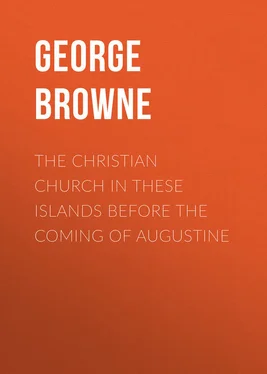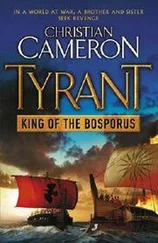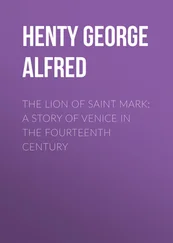George Browne - The Christian Church in These Islands before the Coming of Augustine
Здесь есть возможность читать онлайн «George Browne - The Christian Church in These Islands before the Coming of Augustine» — ознакомительный отрывок электронной книги совершенно бесплатно, а после прочтения отрывка купить полную версию. В некоторых случаях можно слушать аудио, скачать через торрент в формате fb2 и присутствует краткое содержание. Жанр: foreign_antique, foreign_prose, Историческая проза, на английском языке. Описание произведения, (предисловие) а так же отзывы посетителей доступны на портале библиотеки ЛибКат.
- Название:The Christian Church in These Islands before the Coming of Augustine
- Автор:
- Жанр:
- Год:неизвестен
- ISBN:нет данных
- Рейтинг книги:4 / 5. Голосов: 1
-
Избранное:Добавить в избранное
- Отзывы:
-
Ваша оценка:
- 80
- 1
- 2
- 3
- 4
- 5
The Christian Church in These Islands before the Coming of Augustine: краткое содержание, описание и аннотация
Предлагаем к чтению аннотацию, описание, краткое содержание или предисловие (зависит от того, что написал сам автор книги «The Christian Church in These Islands before the Coming of Augustine»). Если вы не нашли необходимую информацию о книге — напишите в комментариях, мы постараемся отыскать её.
The Christian Church in These Islands before the Coming of Augustine — читать онлайн ознакомительный отрывок
Ниже представлен текст книги, разбитый по страницам. Система сохранения места последней прочитанной страницы, позволяет с удобством читать онлайн бесплатно книгу «The Christian Church in These Islands before the Coming of Augustine», без необходимости каждый раз заново искать на чём Вы остановились. Поставьте закладку, и сможете в любой момент перейти на страницу, на которой закончили чтение.
Интервал:
Закладка:
Now, quite apart from Luidhard’s long and faithful work, we have seen that there was in Canterbury the fabric of a Christian church remaining from the time before the English came; and that there was in Canterbury the fabric of another church, out of which they made their Cathedral church.
There was a church in existence at Canterbury when our bishop Mellitus was archbishop there, between 619 and 624, dedicated to the Four Crowned Martyrs of Diocletian’s persecution, the Quattro Santi Incoronati, whose church is one of the most interesting in Rome. But this Canterbury church may have been built by the Italians.
Again, there is very unmistakable and interesting Roman work at St. Pancras, in Canterbury; and this was, according to tradition, the temple which Ethelbert had appropriated for the worship of his idols, and now gave for Christian purposes. The tradition further says that it had once been a Christian church, before the pagan English came; and the remains of the Roman building still visible are believed to point in that direction. The church of St. Pancras at Rome was built about 500. In connection with this idea of a pagan temple being used by the Christian clergy for a church, we may remember that the Pantheon at Rome was turned into a church seven or eight years after this, the dedication being changed from “all the Gods” to “St. Mary of the Martyrs,” and this was the origin of the Festival of All Saints 10 10 The contradictory instructions given by Gregory on the question of using heathen temples for Christian worship are rather puzzling. They are found in a letter to Mellitus, dated June 15, 601, and in a letter to Augustine, dated June 22, 601. The surmise of Messrs. Haddan and Stubbs that the former date is wrong, and that the letter to Mellitus was later than that to Augustine, is reasonable, and solves the puzzle. On this view, Gregory wrote to Augustine, on June 22, 601, to the effect that the idol-temples must be destroyed. This letter, as we know, he gave to Mellitus, who was in Rome, to be brought by him to England. Then, a few days later, perhaps on June 27, he sent a short letter to Mellitus, to say that he had carefully considered the matter, and had decided that if an idol-temple was well built, it should be cleansed, and consecrated to the service of Christ. It is an interesting fact that the earliest historical testimony to the existence and martyrdom of St. George, who was recognised for so many centuries as the Patron of England, is found in an inscription in a church in southern Syria, dating from about the year 346, stating that the church had been a heathen temple, and was dedicated as a church in honour of the “great martyr” St. George.
. Bede adds an important fact, that Ethelbert gave the Italians a general licence to restore churches.
How did it come about that when the Italians came to heathen England, they found here these remains of Christian churches, needing only repair? Who built them? Was it an accidental colony of Christians, that had been settled in Canterbury, or had there been what we may call a British Church, a Christian church in Britain, long before the Saxons came, longer still by far before the Italians? The answer to those questions is not a short or a simple one, when we once get beyond the bare “yes” and “no.” Many other questions rise up on all sides, when we are looking for an answer to the original questions. It is my aim to take those who care to come with me over some parts of the field of inquiry; rather courting than avoiding incidental illustrations and digressions; for I think that in that informal way we pick up a good deal of interesting information, and get perhaps to feel more at home in a period than by pursuing a more formal and stilted course. Indeed a good deal of what I have said already has evidently been said with that object.
The first question I propose for our consideration is this: – Who were the people who built the churches? It is not a very explanatory answer, to say “The Britons.” There is a good deal left to the imagination in that answer, with most of us. With the help of the best qualified students, but without any hope that we could harmonise all the diverse views if we went far into detail, let us look into the matter a little. It may be well for all of us to remember in this enquiry that our foundations are not very solid; we are on thin ice. Nor is the way very smooth; it is easy to trip.
We need not go back to the time of the cavemen, interesting and indeed artistic as the evidence of their remains shews them to have been. Their reign was over before Britain became an island, before a channel separated it from the continent. It is enough for our present purpose to realise, that when the great geological changes had taken place which produced something like the present geographical arrangements, but still in prehistoric times, times long before the beginning of history so far as these islands are concerned, our islands were occupied by a race which existed also in the north-west and extreme west of Europe. Herodotus knew nothing of the existence of our islands; but he tells us that in his time the people furthest to the west, nearer to the setting sun than even the Celtae, were called Kynesii, or Kynetes. Archaeological investigations shew that, though he did not know it, his statement covered our islands. The people of whom he wrote were certainly here as well as on the western parts of the continent. As some of us may have some of their blood in our veins, we may leave others to discuss the question whether the names Kynesii, Kynetes, mean “dog-men,” and if so, what that implies. St. Jerome in the course of his travels, say about 370 years after Christ, saw a body of savage soldiers in the Roman army, brought from a part of what is now Scotland – if an Englishman dare say such a thing; they were fed, he tells us, on human flesh. The locality from which they came indicates that they were possibly representatives of these earlier “dog-men,” if that is the meaning of Kynetes. Secular historians, long before Jerome, have an uncomfortable way of saying that the inhabitants of the interior of Britain were cannibals, and their matrimonial arrangements resembled those of herds of cattle. As we in London had relations with the centre of the country, we may argue – and I think rightly – that by “the interior” the historians did not mean what we call the Midlands, but meant the parts furthest removed from the ports of access in the south-east, that is, the far west and the far north.
Next, and again before the history of our islands begins, an immigration of Celts 11 11 Known as the Goidelic branch of the Celtic race.
took place, a people belonging – unlike the earlier race of whom I have spoken – to the same Indo-European family of nations to which the Latins, and the Teutons, and the Greeks, and the speakers of Sanskrit, belonged. Of their various cousin-nations, these Celts were nearest in language to the Latins, we are told, and, after the Latins, to the Teutons. They came to this island, it is understood, from the country which we call France.
Thirdly, the Gauls, who on the continent had both that name and the name of the older Celts 12 12 The names Galatae and Celtae are not improbably the same word, the latter name being pronounced with a short vowel between the l and the t , as though spelled Celătae or Celŭtae. It is in fact so pronounced to this day in many parts of the island.
, and must be regarded as the dominant sub-division of their race, impelled in their turn by pressure from the south and east, came over into these islands, and here were called Britons 13 13 Known as the Brythonic branch of the race.
. They squeezed out the earlier occupants from most part of the larger island, driving them north and west and south-west, as the Celtic inhabitants long before had driven the earlier race. When the Romans came, fifty years before Christ, these Britons occupied the land practically from the south coast to the further side of the Firth of Forth. There had been for some time before Caesar’s arrival a steady inflow of Belgic Gauls, people from the eastward parts of what we call France; and these people, the most recent comers among the Britons, were found chiefly on the coasts, but in parts had extended to considerable distances inland. The Celts, to distinguish the preceding immigrants by that name, though in fact it does not properly convey the distinction, occupied Devon and Cornwall, South Wales, the north-west corner of North Wales, Cumberland, and the south-west of what we now call Scotland, that is, Wigton, Kirkcudbright, Dumfries, and part of Ayr. They occupied also a belt of Caledonia north of Stirling. They occupied at least the eastern parts of Ireland. Anglesey and Man were in their hands. The parts of Scotland north of Perthshire and Forfar may be regarded as the principal refuge of the remnant of the people whom we have described as the earlier race, before the Celts; and there were traces of them left in almost all the parts occupied by their immediate successors the Celts. The name by which we ought probably to call these latter, the Celts, in whatever part of the islands they might be, has been familiarly used in a sense so limited that it might cause confusion to use it now in its larger sense. I mean Gael, and Gaelic.
Интервал:
Закладка:
Похожие книги на «The Christian Church in These Islands before the Coming of Augustine»
Представляем Вашему вниманию похожие книги на «The Christian Church in These Islands before the Coming of Augustine» списком для выбора. Мы отобрали схожую по названию и смыслу литературу в надежде предоставить читателям больше вариантов отыскать новые, интересные, ещё непрочитанные произведения.
Обсуждение, отзывы о книге «The Christian Church in These Islands before the Coming of Augustine» и просто собственные мнения читателей. Оставьте ваши комментарии, напишите, что Вы думаете о произведении, его смысле или главных героях. Укажите что конкретно понравилось, а что нет, и почему Вы так считаете.












